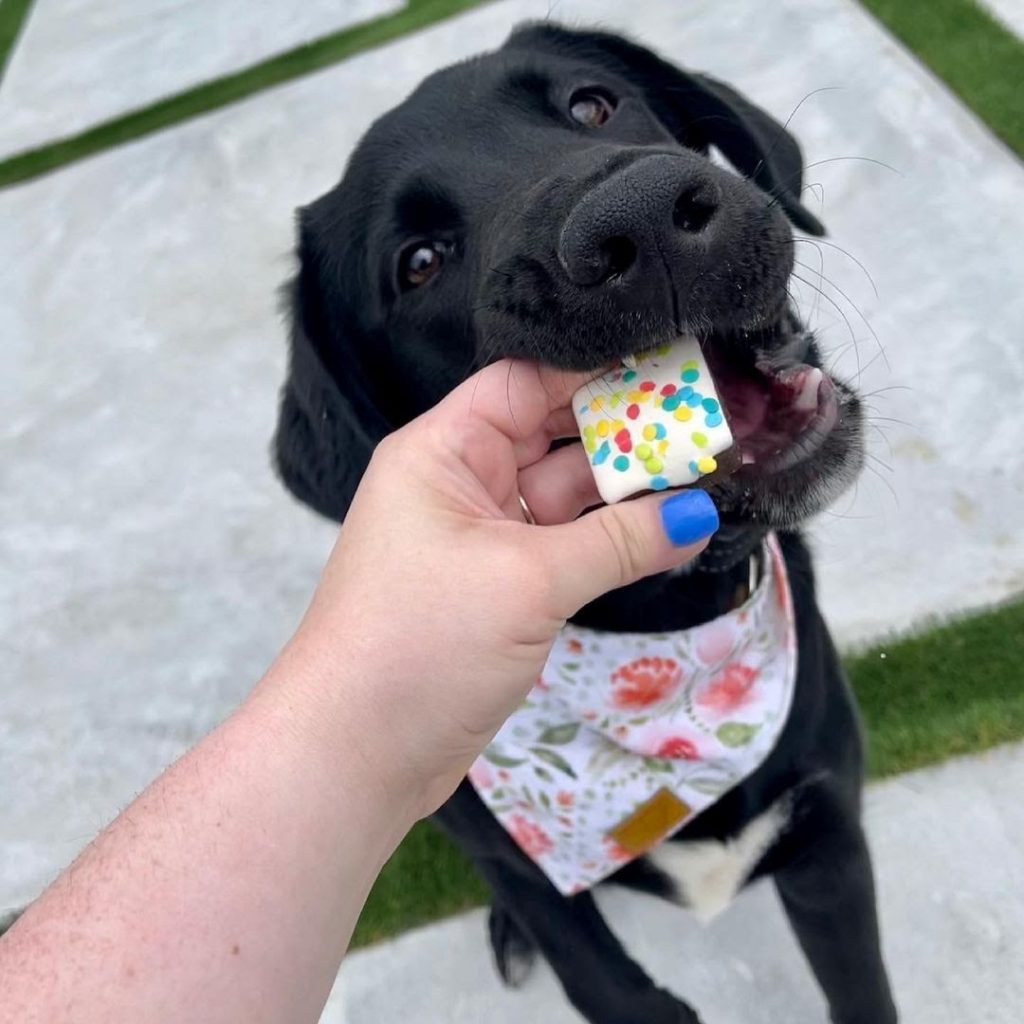Labrador Retriever 101: The Essential Guide
| Origin | Newfoundland |
| Size | Medium |
| Height | 21 to 24 inches |
| Weight | 55 to 80 pounds |
| Life Expectancy | 10 to 12 years |
| Breed Group | Sporting Group |
| Affection Level | ⭐⭐⭐ |
| Friendliness | ⭐⭐⭐ |
| Activity Level | ⭐⭐⭐ |
| Barking/Howling Level | ⭐⭐ |
| Pet Friendly | ⭐⭐⭐ |
| Kid-Friendly | ⭐⭐⭐ |
| Shedding | ⭐⭐⭐ |
| Easy to Groom | ⭐⭐⭐ |
| Easy to Train | ⭐⭐⭐ |
Table of Contents
Origin


Although the name suggests that he might come from Labrador, Canada, the Labrador Retriever was actually conceived in Newfoundland which was later on brought to Europe by several fishermen in the 1800s. This sporting breed excels in work ethics with his fisherman companion as he used to jump into icy waters to bring back fishes that got off the hook and help pull in the fish-filled nets.
Such a job is easy for the Labrador dog as his coat repels water and his webbed toes aid in having an easier time swimming.
Subsequently, when this breed was brought to Poole, England, the Earl and Duke of Malmesbury incorporated the Lab with various sporting games such as shooting. It was then in the early 1900s when this canine’s popularity grew immensely and American farmers discovered how useful this dog is in their daily work.
In just a short period, the Labrador Retriever eventually became one of the most loved breeds in the world and continues to work and please those they live with at their respective homes.
Appearance


An average Labrador Retriever looks solid and full. His appearance from the side is close to a rectangular shape, with a strong body and well-built legs. From the way he looks, anyone can simply recognize this breed. The combination of a broad head, two large drooping ears, and a set of big eloquent eyes are just a few of his identifying marks.
If you have a field Labrador, he might look a bit different from the one that conforms to the American Kennel Club’s breed standard. He would be taller, lightly built, with a less broad face and a slightly longer nose. Despite the small contrast, his look must still be proportionate to the recognized caliber. Anything extreme is unacceptable.
The two other popular symbols of this dog breed are his thick double coat and his otter-like tail that is thick and straight.
Coat & Color


(Three of the recognized colors for the Labrador Retriever)
The Lab has a smooth and easy-to-care coat which is composed of two layers. First is his topcoat that is usually short, bushy, and straight. Underneath it is a much softer and weather-resistant undercoat. His double coat serves as a great advantage especially if he is being used as a duck retriever for hunters.
Regarding the Lab’s colors, AKC recognizes three. They are:
- Black
- Chocolate
- Yellow
In practice, a yellow Labrador may come in various shades from pale to fox red. On another note, there is a new controversial color of Lab dog that is not yet acknowledged by major kennel clubs- the silver Labrador. This look is mainly caused by the “dilution gene” because it adulterates the Lab’s coat color.
With this gene, a black Labrador’s coat may result in a softer charcoal color, the yellow Lab, champagne, while the brown dog will end up with a silver coat. This oddness is causing a huge stir among Labrador lovers and enthusiasts!
Size & Weight
The Labrador Retriever is placed in the medium-sized category, but due to his build, he may come across larger than he looks. The height and weight are mainly factored by the dog’s gender. To better see the difference, see the table below:
| Gender | Weight | Height |
| Male Labrador Retriever | 65-80 pounds | 22-24 inches |
| Female Labrador Retriever | 55-70 pounds | 21-23 inches |
Be aware that this dog can mature faster than you’d expect. From about 6 to 12 months, he will reach his adult size. He may continue growing until he is 2 years old but the more noticeable changes happen during his early months or first year as a dog.
Temperament
Compared to all the other dog breeds out there, the Labrador Retriever tops the personality department. He is sweet by nature and is always eager to amuse his owners. According to breed standards, the ideal temperament of this canine consists of a manageable behavior, extroversion, eager to please attitude and non-aggression.
His consistent top ranking on breed popularity is something he well deserves. Many dog lovers find the Lab an excellent companion due to its unique and almost perfect qualities that appeal to people. Some would say that the color of the Labrador dog affects the temperament, but there is no evidence to back this up yet. To know what to expect from your Labrador puppy, observe his parents’ disposition.
Affection


The fact that the Labrador Retriever is a people-oriented breed makes him the perfect cuddle-buddy on the planet! He can show his affection in several ways which, unfortunately sometimes, can be misinterpreted as misbehavior. This can be remedied, however, by figuring out your Lab’s love language.
Spending a lot of your time with your dog is a great way to understand his way of communicating his love. Take him to dog parks regularly where he can mingle with other dogs or simply chill in the yard whilst playing a retrieving game. At times, expect his tail to wag up high or jump on you once you get home from work. You would also experience some instances where he’ll try to get your attention through his nose-poking or rolling over.
Another great Labrador feature is that this dog will automatically be fond of your kids or other housepets and will maintain the loving atmosphere of your home.
Friendliness


Isn’t it great that the Labrador Retriever is genetically predisposed to be a loving and affectionate dog? These are what make him one of the friendliest canines ever listed in several kennel clubs! The Lab maintains the reputation of being the most open to kids, pets, and strangers making him the most compatible dog for all kinds of people.
Kids
Labs are calm, patient, and friendly, especially when they have to deal with small children at home. Their aggression level is too low you’d be confident that they would get along very well with the youngsters. If your Labrador is laying in the living room and is surrounded by young children, you will notice how careful he is with his movements to avoid knocking them over.
However, his enthusiasm could mean potential mishaps. This is a high-spirited dog that is fond of showing his amiability and this can be in the form of jumping on them, so watching the interaction is imperative.
Other Dogs and Pets
Labradors make friends easily with other dogs and other pets such as cats and rabbits. Since he has a strong history of working with farmers, he can create rapport with the livestock as well.
Of course, his innate ability to bond with other pets must be reinforced with proper socialization training. If there is a new arrival at home, introduce them to each other properly. Avoid making the mistake of just placing a cat in a room with your Retriever and just hope they’d get along with each other on their own. Despite his friendly persona, he is still capable of inflicting some sort of injury to the feline if he doesn’t know how to act around the new pet.
Strangers
It is commonly known advice never to approach a random dog as you do your walk outside. However, if you happen to pass by a Lab and approach the canine, chances are that he won’t react aggressively. His social skills make him the most approachable dog out there! Nonetheless, this doggo will not compromise if he spots a stranger lurking around the house. He will bark to alert the owners, but he is not protective. Labs are great watchdogs rather than guard dogs.
Activity Level


With his high levels of energy, owning a Labrador Retriever will push you to be more active. He was bred to do physically demanding jobs either in a fishing lake or in the field, so his body remains to crave activities that will stimulate his muscles and his mind.
Naturally, the Lab has a high prey drive which will make him chase after small animals, that is if he grew up untrained. He used to hunt ducks and fishes for generations and his inclination to kill chickens or even a cat is still there if his behavior is left unchecked. You can redirect his active and unwanted prey drive through games similar to hunting.
Care
Bringing home a Labrador puppy will give you responsibilities and they are normally not staggering for most dog owners. For some, this breed can be high maintenance, and others would say that it isn’t. No matter how you take care of your delicate breed, ensuring that he gets all the essentials would be enough to give him a high-quality life.
Grooming


Some dog breeds such as the Labrador Retriever require infrequent baths. This is because bathing him too often will strip him off of his natural body oils that protect his skin. This will result in flakiness and itchy, uncomfortable sensations. So when is the right time to bathe him? Clean him only when he starts getting stinky or if he becomes dirty after rolling on some muddy swamps. Remember to use only mild shampoos to maintain his healthy skin and coat.
As for his thick coat, you’ll be treated to a full blowout during spring and fall due to his immense shedding. During these times, brushing him twice a week helps in reducing the amount of hair fall. You can instantly switch to just brushing him once a week when these seasons are over.
Other basic care should be done as well which includes nail trimming, oral care (to avoid dental disease), and ear cleaning. These can be done by an experienced groomer, but since this mutt is relatively calm during the process, grooming can be done at home.
Food and Diet


(A black Lab receiving a treat)
There is a belief that for your dog to achieve a long life full of vigor, he should eat what nature intends him to eat. There is what we call the BARF diet that is mainly composed of fresh raw foods such as veggies and meat. That can occasionally include raw whole eggs, kelp, and yogurt. You may also opt for dry food or kibble.
Feeding your Lab varies widely on his activity level, size, age, and health history. A Labrador puppy would need twice the amount of food you’d give to an adult dog since his early stages are crucial for his development. You would want him to have all the nutrients for his bones and muscles to keep him active!
To know how much to feed your Labrador Retriever, the Eukanuba Adult Breed Lamb and Rice food recommends these daily serving sizes:
| Weight | Amount of Kibble |
| 40 – 45 pound | 205 – 230 grams |
| 50 – 55 pound | 240 – 265 grams |
| 60 – 65 pound | 270 – 300 grams |
| 70 – 75 pound | 300 – 335 grams |
| 80 – 85 pound | 330 – 365 grams |
| 90 – 95 pound | 355 – 395 grams |
Exercise


(a Yellow lab enjoying his time in the park)
If we speak about energy, surely your Lab would need lots of exercises. No matter what type of weather the day has, he will still insist on having a walk in the park, playing games of fetch, or finding toys. His constant need for daily physical and mental stimulation will also get you moving! The common realization many Lab owners have is that weight loss instantly happens without having to grind hard.
Just being with this dog and accompanying him on his daily release of pent-up energy will keep you fit and your dog healthy. Wouldn’t it be much easier to do a 30-minute mountain hike with your dog than spend the time on a boring treadmill?
Moreover, exercise will prevent him from exhibiting destructive behaviors. Some dog owners get confused as to why their dogs start becoming annoying and would grasp later on that their pet just needs his daily drills. Remember that this dog has a history of doing rigorous tasks and is not meant to be a couch potato.
Training


The natural work ethic precedes the Labrador Retriever. That means, training him would be fairly easy. His innate good personality should be paired with proper training to ensure that he does not grow up rowdy or end up having behavioral issues. Socialization is imperative and learning house rules can eliminate tension at home.
Only use positive reinforcements such as praise and rewards for your Lab. He does great on obedience training and he has a high chance of qualifying in competitions! Do you know that he loves to please his owners? You can use that to your advantage so he becomes the respectable breed many know and love.
Health Problems


(General appearance of a healthy Lab)
Labs are commonly healthy dogs, but can still experience some health issues. As an owner, you have to be aware of what he is prone to avoid the worsening of the condition. Hip dysplasia, heart disease like tricuspid valve dysplasia (TVD), epilepsy, and muscle weakness can strike on all Labs. Having a cataract is usually seen in canines too. Luckily, your dog can adjust well to it. His ears will gradually be sharper in function as he starts losing vision.
Exercise-induced collapse (EIC) can affect your pup too. This can be observed between 5 months to 3 years of age or when more intense training occurs. What happens is, after intensive training, your dog starts losing control of his muscles. This episode shows right after 5 to 25 minutes of extreme exercise. This can be best remedied through a reconciling plan of games that won’t trigger this condition or by consulting your local vet.
Pros and Cons of Having a Labrador Retriever
Pros
- Labradors are friendly dogs
- They have extreme patience even with kids
- Very trainable
- His mouth structure is perfect for fetching
- Labs are not afraid of water or baths
- Can adapt easily to living conditions
- Generally healthy
Cons
- They tend to easily manipulate humans with their looks and puppy-like behaviors
- He is not a great guard dog
- He sheds tons!
- Prone to developing unhealthy eating habits
- Early socialization is a must for the Labrador Retriever
- It can be costly to have
- Would only need high-quality dog food
- Has high curiosity levels which can lead him to trouble
Do Kennel Clubs Recognize the Labrador Retriever?


Yes, they do! The prestigious Kennel Club was the first to recognize this dog breed in 1903. This was followed by the American Kennel Club in the year 1917. It was in 1991 when the Lab topped the AKC registration and soon after, he became America’s favorite dog breed to this day.
Cost


This famous dog comes at a hefty price if bought from a reputable breeder. Averagely, you can buy one for only $800, but the price ranges anywhere from $400-$1,500. In the first year of having this adorable little pup, you might have to disburse at least $3,000 for his basic needs. The succeeding years will then be cheaper and would only require a $160 average budget. In his 10-12 years, the cost of owning a healthy Lab is $21,000.
If you just got your Labrador Retriever puppy, here is an idea of what he may need in his first year including the cost:
| Supplies | Cost |
| Food and water bowls | $40 |
| Dog collars and leash | $70 |
| ID Tag | $20 |
| Dog crate | $120 |
| First-aid kit | $45 |
| Toys | $150 |
| Grooming tools | $100 |
| Dog bed | $85 |
| Poop bags | $110 |
| Poop scooper | $30 |
| Odor removal sprays | $20 |
| Medical cost | $630 |
| Pet insurance | $565 |
| Food | $265 |
| Other miscellaneous expenses | $55 |
| Total | $2,295 |
For rescued Labs, the price of adoption is only $350 depending on your location or where the shelter home is located. The expense for his first year will depend on whether he’s a puppy or an adult dog already.
Where to Adopt or Buy a Labrador Retriever
Suitable for all ages, this Labrador sounds like the ideal pet to have at home! His high energy, sweet-natured temperament can add an upbeat atmosphere to the family. If you are looking for a great, healthy puppy, these sites are worth checking out:
The Lab’s massive popularity can also be a major downfall for this dog breed. The demand for this canine is so high and this accounts for many of them ending up in shelter homes. In fact, 25% of dogs in adoption centers are purebred pooches and many of them are registered Labs. If you want to help lower the number of Labs that don’t have a home, rescue one!
Labrador Retrievers are dubbed as dogs for all reasons. Whether you need a companion at home or an extra hand in the field, you can surely rely on this dog breed. A lab is fun to have and on top of that, he is loving, intelligent, and cuddly. The Labrador Retriever is another term for perfect!
